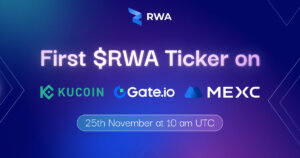 Dotsama ecosystem gets new cross-chain staking with up to 42% APR via Bifrost
Dotsama ecosystem gets new cross-chain staking with up to 42% APR via Bifrost Dotsama ecosystem gets new cross-chain staking with up to 42% APR via Bifrost
Cross-chain derivatives are soon to be a real way to earn extra yield as Bifrost Collator mainnet goes live

Cover art/illustration via CryptoSlate. Image includes combined content which may include AI-generated content.
We recently announced Bifrost’s Collator Mainnet launch, bringing cross-chain staking to the Dotsama ecosystem. However, there is much more to the announcement than it may at first seem. Additionally, some terminologies can be a little hard to understand for the average crypto investor. Staking liquidity through cross-chain derivatives? Multi-chain staking ratios? A three-way positive cycle for the StakeFi ecosystem? These terms describe Bifrost’s approach to yield-bearing crypto assets, but what do they mean? Ultimately, Bifrost allows you to create derivative tokens from your PoS or DOT Slot Auction tokens so that you can stake them to earn additional rewards.
vTokens and unlocking slot auction tokens
Firstly, they mean that there are some extremely clever and passionate people at Bifrost. We had the pleasure of talking with them last week, and it is evident that they have a strong understanding of the majority of the blockchain infrastructure. This is required since their platform runs on Dotasama, a combination of the Polkadot and Kusama blockchains. Polkadot is a layer-0 blockchain as it allows projects to create parachains on top of the main Polkadot blockchain. This allows a project to develop its chain without building the entire blockchain from scratch. Further, they have the security of the more extensive Polkadot network to enable them to focus on scalability and decentralization while also securing the network.
Bifrost claims to
“provide standardized cross-chain interest-bearing derivatives… by aggregating over 80% of PoS consensus chains’ staking liquidity … empowering users, multi-chains, and ecosystem applications.”
They do this through voucher tokens, of which there are two types, one for proof of stake chains and the other for slot auctions in the Polkadot ecosystem, using a system they call the Staking Liquid Protocol (SLP). With slot auctions, tokens are locked into slot auctions for the duration of the lease. However, Bifrost’s SALP protocol creates a derivative that allows users to release liquidity at a 1-1 peg. The vKSM token is currently live and can be minted on the Bifrost dApp. Holders of a vToken can stake them using Bifrost’s Collators, allowing them to earn a yield from their derivatives in the form of the BNC token.
Collators and rewards
Collators are where you stake your vTokens. Each collator is limited to 300 delegators, and once they are complete, any future delegators will not earn any rewards. Further, the earlier you delegate your tokens, the higher your yield.
The team gave us the following example to explain the numbers.
If a collector’s total delegating amount is 100,000 BNC and it is in the 64 Active Collator set for the whole year, the average revenue of the Collator is:
Collating Reward: 800,000 x 10% / 64 = 1,250 BNC
Self-bond delegating Reward: 800,000 x 90% / 64 x 5,000/100,000 = 562.5 BNC
Total Revenue: 1,250 + 562.5 = 1,812.5 BNC
APR: 1,812.5/5,000 = 36.25%
The Bifrost SLP will also use a selection of validators and Collators to “help users complete higher-yielding strategy combinations.” Currently, the highest yielding Collator on the Bifrost dApp is LSVT which has 34,441 BNC ($27,709) and 33 delegators with a yield of 45%. This means there are still over 200 slots available to lock in this reward level. The total value locked across the Bifrost dApp is $125,918,038, with BNC staking still to come.
This is certainly a novel approach to yield aggregation and is made possible only through Polkadot’s unique interoperable ecosystem.
The future of Bifrost and other opportunities
Interestingly, the value of vETH to ETH differs by around $650 at writing. This is because vETH has no “certain redemption time” at present, which creates an arbitrage opportunity. Furthermore, as there is no AMM peg, markets can price vETH independently. According to the team, as soon as the Polkadot – Ethereum bridge is complete, vETH will be fully controlled under the SLP protocol.
The Bifrost team believes Q2 of 2022 will be a historic quarter as the core protocol, SLP, goes live on the mainnet. The release order for vToken derivatives will be vKSM, vBNC, then vMOVR. MOVR is the Moonriver token which is used by the vETH token. The team is also “discussing upgrading the BNC utility model to vToken minters as well as capturing more value for users who participate in staking, Stay tuned.”
Disclaimer: CryptoSlate has received a grant from the Polkadot Foundation to produce content about the Polkadot ecosystem. While the Foundation supports our coverage, we maintain full editorial independence and control over the content we publish.



 Farside Investors
Farside Investors 


 CoinGlass
CoinGlass 

























































































